Comparative Analysis of Materials for Retrograde Filling Conducted on Extracted Teeth in Wet and Dry Environments.
Traducción automática
El artículo original está escrito en idioma RU (enlace para leerlo) .
Abstract
Objective: This study conducted a comparative analysis of materials for retrograde filling based on usability, degree of hardening, and sealing ability in different environments.
Materials and methods: The study was conducted on endodontically treated extracted teeth using MTA-based materials: ProRoot MTA (Dentsply), Biodentine (Septodont), MTA HR Repair (Angelus), MTA grey (Angelus), BC sealer (Endosequence). After retrograde preparation and filling, the tested material was divided into two groups for hardening in dry and wet environments. A qualitative analysis of the hardening and sealing of the materials was conducted after 1 day.
Results: After thorough investigation, it was proven that not all claimed materials meet the requirements for cements used in apical surgery. The material BC sealer (Endosequence) is not suitable for long-term use and has a number of significant drawbacks.
Conclusions: Among the selected materials, the most reliable are ProRoot (Dentsply) and Biodentine (Septodont). The use of single-dose ensures the sterility of the preparation, and the ability to harden and maintain tightness in a liquid environment guarantees the density of the root canal obturation.
Relevance of the problem
Currently, one of the common methods for treating apical periodontitis is the technique of root apex resection with retrograde filling. With the advent of operating microscopes, the success of this method has sharply increased, as the conditions and quality of the procedure have changed. In addition, the number of doctors skilled in performing this manipulation has increased. Due to the growing demand for materials for retrograde filling, manufacturers from different countries have started producing materials with various properties and compositions, not to mention the price range.
Over the past 10 years, most studies have been conducted using the well-established material ProRoot MTA (DENTSPLY), which for a long time was the only cement based on Mineral Trioxide Aggregate (MTA). The emergence of new materials undoubtedly raises great interest among practicing doctors and requires comparative studies.
Objective of the Study
To conduct a comparative analysis of materials for retrograde filling based on criteria of ease of use, degree of hardening, and sealing ability in different environments.
Materials and Methods
The study was conducted on MTA-based materials: ProRoot MTA (Dentsply), Biodentine (Septodont), MTA HR Repair (Angelus), MTA grey (Angelus), BC sealer (Endosequence) on extracted intact multirooted teeth. The total number of teeth studied was 7, with 20 root canals examined (4 for each type of material). The canals were initially treated equally mechanically (Protaper S1, S2, Next X1, X2, X3) and chemically (saline) and filled with gutta-percha (injector) and sealer (AH+). After that, a fissure bur was used to resect the apices of all roots by 3 mm and retrograde preparation of the canals by 3 mm. The materials for retrograde filling were mixed strictly according to the instructions by one operator. The apices of the roots were filled with the aforementioned materials and were divided into 2 groups for hardening: in a dry and liquid environment (water). After 1 day, the hardening and sealing ability of the materials were assessed. To evaluate the sealing ability, a methylene blue solution was applied to the apices of the roots, and the degree of staining of the tested material and the space between the material and the root wall was analyzed. The analysis was conducted using a dental microscope at 30x magnification. The degree of hardness was determined using a dental probe.
Results and Discussion
According to the manufacturers' instructions, all the mentioned materials are applicable for retrograde filling of the root apexes. However, it has been found that some of them do not meet all the requirements for cements used in apical surgery.
Requirements for Materials for Apical Surgery
- biocompatibility
- sealability
- plasticity
- ability to set in a liquid environment
- x-ray contrast
Ease of use is an important factor in time-limited conditions during surgery. The quality of mixing the material directly depends on the speed and precise ratio of components, and consequently on the manual skills of the assistant. The most convenient and predictable in this regard turned out to be the material Biodentine (Septodont). The material consists of a set of sealed capsules with cement and closed cannulas with distilled water (Fig. 1). After adding water, the capsule is placed in a mixer for 60 seconds, and the cement is ready for use. The use of single-dose units and mechanical mixing eliminates the human factor and guarantees the sterility of the preparation.
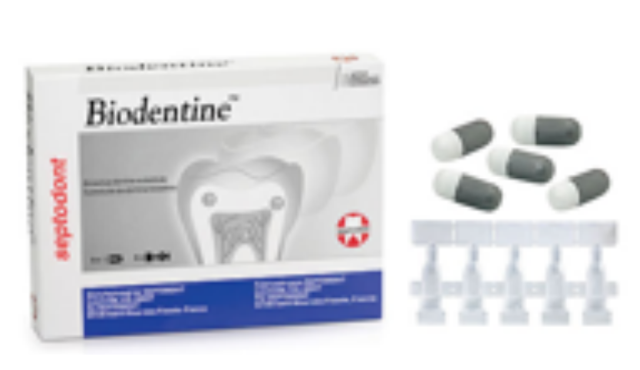
The working time with materials is quite comfortable for all manufacturers, allowing for even mixing and application of the material in the working area (working t - this is the time from the start of mixing to the start of material hardening, t hardening - this is the period from the start to complete hardening). The data regarding this parameter were taken from the material instructions and were not verified in the study. However, it is worth noting that the BC sealer (Endosequence), despite having the longest working time, has a number of drawbacks. It is the only material supplied in the form of a ready-made paste, contained in a plastic cap (Fig. 2). The tightness of the closure is not provided, and after the first use, the material begins to lose moisture and become harder. In addition, after opening, one can assume a possible subsequent contamination of the material, which excludes its further use.
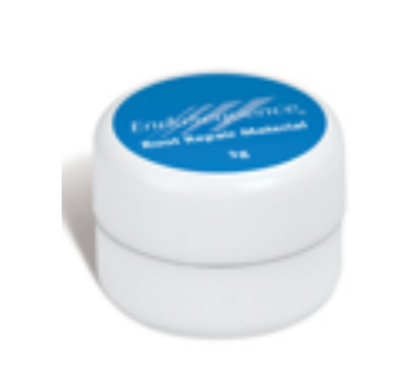
The solidification in different environments was tested by mechanical impact on the material. The possibility of its extraction using a dental probe was conditionally indicated in percentages, where:
100% - the material does not crumble
50% - the material partially crumbles
0% - the material crumbles easily.
The ability to solidify in a liquid environment is a clinically significant property of the material for retrograde filling. Thus, the most reliable materials turned out to be ProRoot (Dentsply) and Biodentine (Septodont).
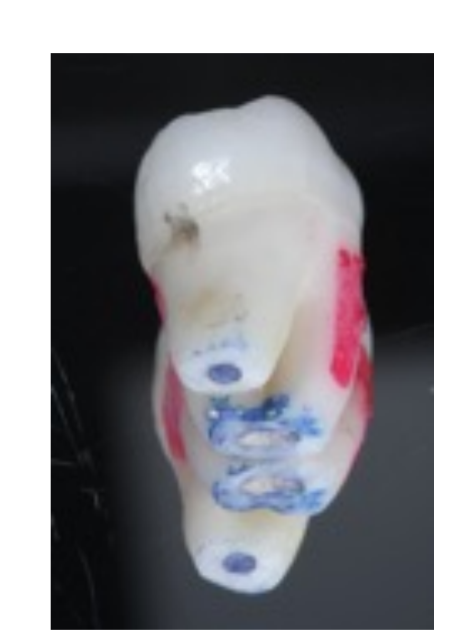
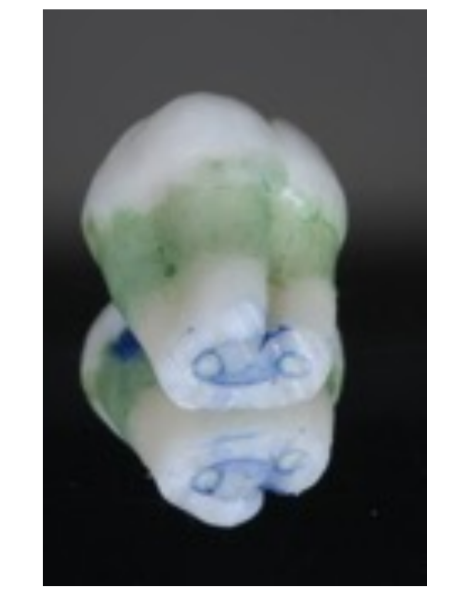
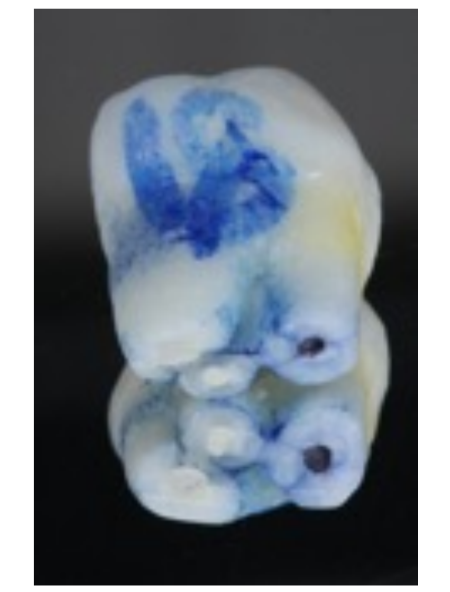
In addition to curing, an important factor is the ability to maintain sealing for a long time and resistance to dissolution by biological fluids. Sealing was determined inversely proportional to the degree of staining with methylene blue. The staining of both the material itself and the space between the material and the wall of the tooth root was evaluated under 30-fold magnification. The lowest degree of staining was observed in the materials ProRoot (Dentsply) and Biodentine (Septodont), indicating their full compliance with the requirements for materials used in apical surgery.
Comparative Characteristics of Materials for Retrograde Filling

Conclusions
As part of the conducted study, it was found that not all retrograde filling cements meet the specified criteria (Table 1). Thus, among the selected materials, the most predictable and reliable are ProRoot (Dentsply) and Biodentine (Septodont). The use of a single-dose ensures the sterility of the preparation, and the ability to harden and maintain tightness in a liquid environment guarantees the density of the root canal obturation.
Authors: Badalyan K.Yu., Zedgenidze A.M.
References
- Grigoryants A.G. Comparative assessment of the effectiveness of various filling materials used in retrograde filling: Author's abstract of candidate of medical sciences. - Moscow, 2008. -22 p.
- Zueva D.D., Maksimovsky Yu.M., Mitronin A.V., Voronina K.Yu. Assessment of the effectiveness of endodontic treatment of chronic periodontitis using materials containing mineral trioxide aggregate //Endodontics today, 2007, No.1. - P.3-6.
- Zueva D.D., Maksimovsky Yu.M., Ulyanova T.V., Chirkova T.D. Calcium-containing materials “Radotsem” and “ProRoot MTA” in the treatment of chronic forms of periodontitis // Cathedra, 2007. -Vol 6, No.1. - P.20-23.
- Tokmakova S.I., Lunitsyna Yu.V. Comparative assessment of the marginal permeability of filling materials used in retrograde filling of root canals of teeth // Problems of dentistry, 2014. - Vol No.5. - P.30-32.
- Grigoryants L.A., Badalyan V.A., Grigoryants A.G. Use of new technologies and filling material MTA in surgical endodontics // Dentsply News. -2004.-No.10.-P. 50-52.
- Amoroso-Silva PA, Marciano MA, Guimarães BM, Duarte MA, Sanson AF, Moraes IG. Apical adaptation, sealing ability and push-out bond strength of five root-end filling materials. Braz Oral Res. 2014;28. Epub 2014 Aug 26.
- Amezcua O, Gonzalez ÁC, Borges ÁH, Bandeca MC, Estrela CR, Estrela C. Sealing ability of root-end filling materials. J Contemp Dent Pract. 2015 Mar 1;16(3):210-4.
- Ma X, Li C, Jia L, Wang Y, Liu W, Zhou X, Johnson TM, Huang D. Materials for retrograde filling in root canal therapy. Cochrane Database Syst Rev. 2016 Dec 17; pub2. Review
- Caron G, Azérad J, Faure MO, Machtou P, Boucher Y. Use of a new retrograde filling material (Biodentine) for endodontic surgery: two case reports. Int J Oral Sci. 2014 Dec; Epub 2014 May 9
- Grech L, Mallia B, Camilleri J. Characterization of set Intermediate Restorative Material, Biodentine, Bioaggregate and a prototype calcium silicate cement for use as root-end filling materials.Int Endod J. 2013 Jul; Epub 2013 Jan 4.
- Benz K, Markovic L, Jordan RA, Novacek C, Jackowski J. In vitro evaluation of the apical seal of two different retrograde filling materials. Aust Endod J. 2017 Apr; Epub 2016 May 30.